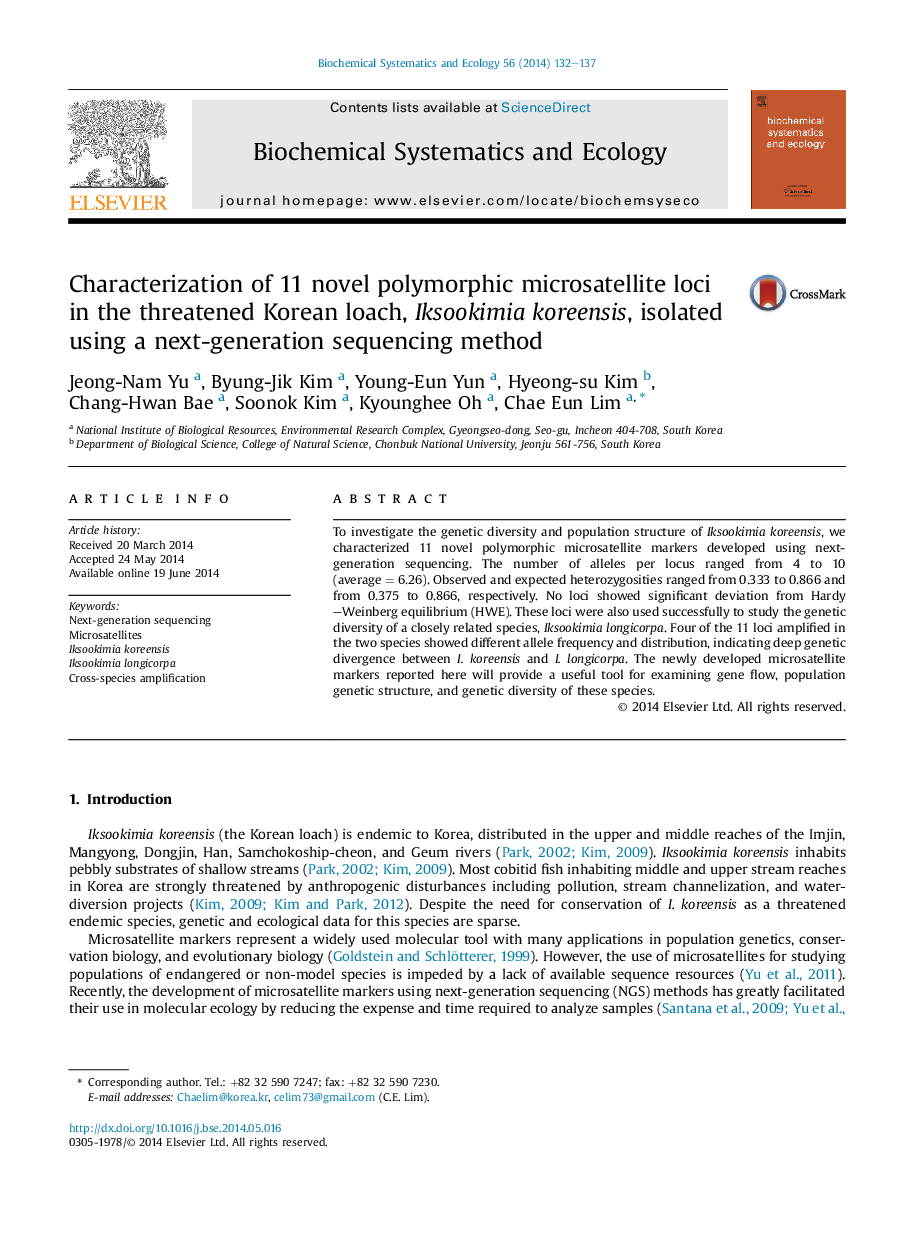| Article ID | Journal | Published Year | Pages | File Type |
|---|---|---|---|---|
| 1354058 | Biochemical Systematics and Ecology | 2014 | 6 Pages |
•We developed 11 novel microsatellite markers in a threatened Korean loach using NGS.•All of the 11 microsatellite markers revealed high diversity and variation without departure from HWE.•Cross-species amplification of more than 60% of these markers in a closely related species.•The 11 novel microsatellite markers will be useful for conservation genetics of the genus Iksookimia.
To investigate the genetic diversity and population structure of Iksookimia koreensis, we characterized 11 novel polymorphic microsatellite markers developed using next-generation sequencing. The number of alleles per locus ranged from 4 to 10 (average = 6.26). Observed and expected heterozygosities ranged from 0.333 to 0.866 and from 0.375 to 0.866, respectively. No loci showed significant deviation from Hardy–Weinberg equilibrium (HWE). These loci were also used successfully to study the genetic diversity of a closely related species, Iksookimia longicorpa. Four of the 11 loci amplified in the two species showed different allele frequency and distribution, indicating deep genetic divergence between I. koreensis and I. longicorpa. The newly developed microsatellite markers reported here will provide a useful tool for examining gene flow, population genetic structure, and genetic diversity of these species.
